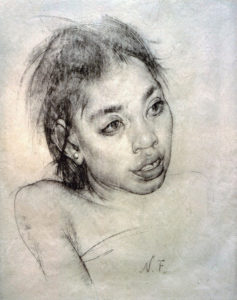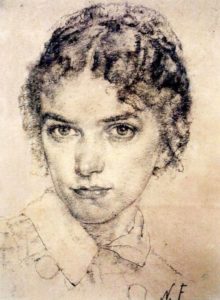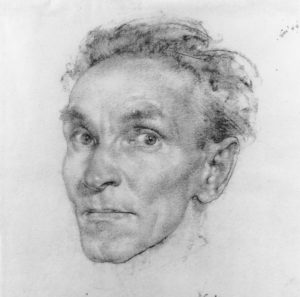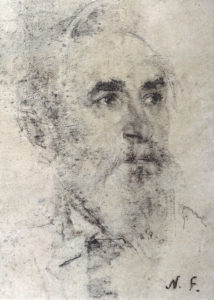Line series part 2: Fechin and the line between order and chaos
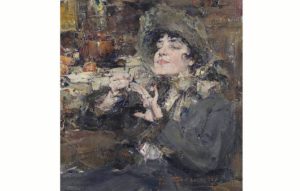
 In the previous blog in the line series, I discussed the work of Hans Holbein the Younger, one of the most influential draughtsmen in history. One of Holbein’s biggest fans is someone you might not expect if you had only seen his paintings. I’m of course talking about early 20th Century Russian American artist, Nicolai Fechin.
In the previous blog in the line series, I discussed the work of Hans Holbein the Younger, one of the most influential draughtsmen in history. One of Holbein’s biggest fans is someone you might not expect if you had only seen his paintings. I’m of course talking about early 20th Century Russian American artist, Nicolai Fechin.
Looking at his paintings, which contain no obvious allusion to line, you might think he was more inspired by the works of someone like Antonio Mancini. Fechin is known for his highly textural, almost abstract paintings that play on the dichotomy between chaos and order, abstraction and realism.
And unlike Holbein, Fechin’s drawings do this too. But, very much like Holbein, Fechin delicately balances his drawings on the subtle beauty of outline and accent. In his works we see a contrast between this idea of soft lighting, dramatic line work, minimal modelling and chaotic textures.
You can quite quickly see how Holbein’s economic use of line and tone influenced Fechin. Indeed, Fechin actually copied several Holbein drawings.
The solidity of line
While Holbein kept his drawings clean and crisp, Fechin opted for a more varied textural approach. But the thread that holds both artists’ drawings together is that solidity of line. In Holbein’s the clean line gives form to the relative emptiness on the rest of the page. In Fechin’s the strength and certainty of line holds together the sense of chaos and disorder elsewhere in the drawing.
What sets Fechin apart from many portrait artists in history is that his sense of beauty does not conform to traditional idealisations. Instead, he sought to capture the asymmetry of the human face, the unusual and at times the grotesque. Some of his more bizarre characters might be likened to the ‘tronie’ paintings of the Dutch Golden Age.
Fechin’s drawings are unique. They are often mistaken for modern works for their boldness when in fact many contemporary artists frequently attempt and often fail to imitate him.
